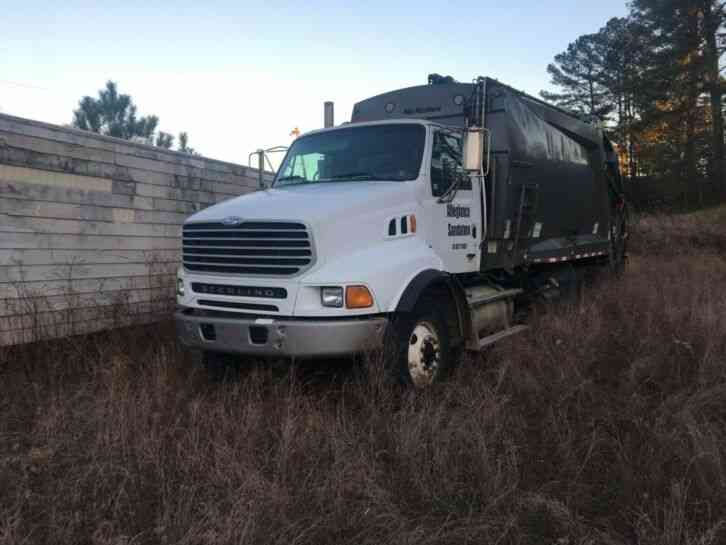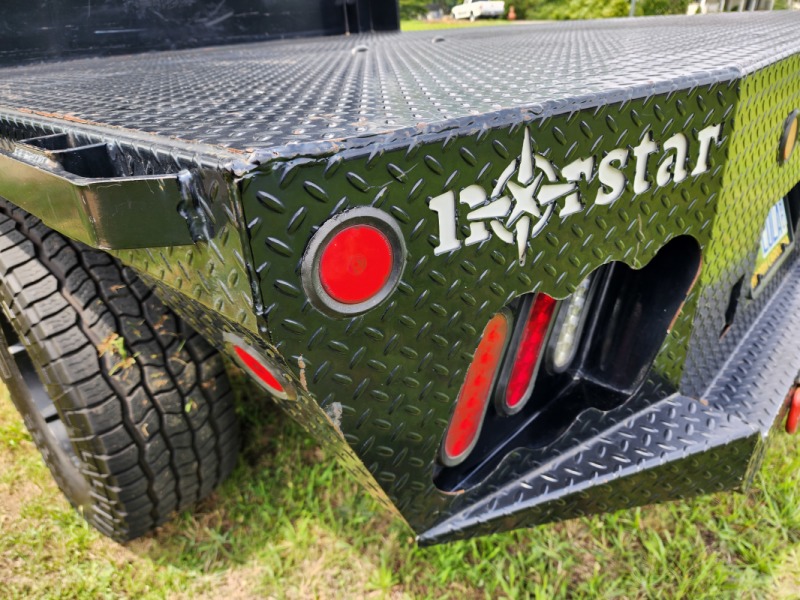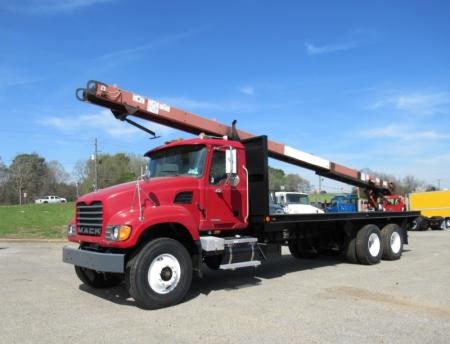Pre Emission Trucks For Sale: Your Comprehensive Guide to Cost-Effective Hauling pickup.truckstrend.com
In the dynamic world of commercial trucking, where new regulations constantly push the boundaries of technology and cost, a segment of the market remains steadfastly popular: pre-emission trucks for sale. These vehicles, built before the most stringent environmental mandates came into effect, offer a compelling alternative for owner-operators and businesses looking for reliability, simpler maintenance, and a lower entry point into the industry.
This comprehensive guide delves into everything you need to know about pre-emission trucks, from their inherent advantages and the challenges they present to practical advice on how to find and evaluate the best deals. Whether you’re a seasoned veteran or a newcomer to the trucking business, understanding the nuances of these machines can significantly impact your bottom line and operational efficiency.
Pre Emission Trucks For Sale: Your Comprehensive Guide to Cost-Effective Hauling
What Exactly Are Pre-Emission Trucks?
At its core, a "pre-emission truck" refers to a commercial vehicle manufactured before specific, federally mandated emissions standards required complex aftertreatment systems. In North America, the most significant turning points were the EPA 2007 and EPA 2010 regulations.
- Pre-2007 Trucks: These are the quintessential "pre-emission" vehicles. They typically lack Diesel Particulate Filters (DPF) and Selective Catalytic Reduction (SCR) systems, which require Diesel Exhaust Fluid (DEF). While they often feature Exhaust Gas Recirculation (EGR) systems, these are generally simpler and less prone to the issues seen in later models. Engines from this era (e.g., Detroit Diesel Series 60, Caterpillar C15, Cummins N14/ISX pre-DPF) are often lauded for their mechanical simplicity and legendary durability.
- Pre-2010 Trucks: While some 2007-2009 models incorporated DPF systems, they generally did not require DEF. Trucks built before 2010 are still considered "pre-DEF," which is a significant appeal for many buyers due to the cost and complexity associated with DEF systems.
The absence of these complex systems means fewer sensors, less sophisticated electronics, and a design philosophy focused more on raw mechanical performance and longevity rather than intricate emissions control.

The Allure of Pre-Emission Trucks: Key Benefits
The sustained demand for pre-emission trucks isn’t just nostalgia; it’s driven by tangible economic and operational advantages.
- Lower Upfront Cost: This is perhaps the most significant draw. Pre-emission trucks are typically much cheaper to purchase than their newer, emissions-compliant counterparts. This lower entry barrier makes them ideal for startups, owner-operators on a budget, or businesses expanding their fleet without breaking the bank.
- Simpler Maintenance & Repair: Without DPFs, DEF tanks, SCR catalysts, and the myriad of sensors and control modules associated with modern emission systems, maintenance becomes significantly less complicated. There are fewer components to fail, diagnostic procedures are simpler, and many repairs can be performed by a wider range of mechanics, potentially even by the owner-operator themselves.
- Reduced Operating Costs:
- No DEF Consumption: Eliminating the need for Diesel Exhaust Fluid saves a recurring operational expense.
- Fewer Emission-Related Breakdowns: Modern emission systems are notorious for sensor failures, DPF clogging, and SCR issues, leading to costly repairs and significant downtime. Pre-emission trucks bypass these common pain points entirely.
- Potentially Better Fuel Economy (Contextual): While newer engines are designed for better fuel efficiency, the parasitic losses from running emission systems and the frequent regeneration cycles can sometimes negate those gains. Many pre-emission engines, when properly tuned and maintained, can offer competitive fuel mileage without the added complexity.

- Reliability and Durability: Many of the engines from the pre-emission era are renowned for their robust design and ability to accumulate millions of miles. Brands like Detroit Diesel, Caterpillar, and Cummins built power plants that have achieved legendary status for their longevity and reliability, provided they received proper maintenance.
- Less Downtime: With fewer complex systems to malfunction, pre-emission trucks often spend more time on the road earning revenue and less time in the shop. This increased uptime is invaluable for any trucking operation.
- DIY-Friendly: For owner-operators who prefer to do their own wrenching, pre-emission trucks are generally much more accessible. Basic diagnostic tools and mechanical knowledge often suffice for common issues, unlike the specialized software and equipment required for newer models.
Important Considerations Before Buying: Challenges & Solutions
While the benefits are compelling, purchasing a pre-emission truck is not without its challenges. Savvy buyers must be aware of these potential pitfalls.
- Age and Wear: By definition, pre-emission trucks are older vehicles. This means they likely have high mileage and significant wear and tear on components beyond the engine, such as transmissions, differentials, suspension, brakes, and electrical systems.
- Solution: Budget for immediate and ongoing repairs. A thorough pre-purchase inspection is non-negotiable.
- Future Regulatory Compliance: This is the biggest risk. Regulations are constantly evolving. States like California, with its aggressive California Air Resources Board (CARB) regulations, are actively phasing out older diesel trucks. Other states and even cities may follow suit.
- Solution: CRITICALLY IMPORTANT: Research the specific regulations for the states and regions where you intend to operate. Some pre-emission trucks may be completely banned from certain areas or require significant modifications to comply.
- Fuel Economy (Nuance): While avoiding DPF/DEF issues is a plus, some very old engines might not be as fuel-efficient as the latest designs, even considering the emission system’s impact.
- Solution: Research specific engine models and their reported fuel economy. Factor fuel costs into your total operating expenses.
- Availability of Parts: While common engine components are usually available, specialized or less common parts for very old trucks might become harder to source or more expensive.
- Solution: Partner with reputable parts suppliers and consider stocking essential wear items if you run a fleet.
- Financing and Insurance: Lenders may be less willing to finance very old trucks, or they might require a larger down payment and charge higher interest rates. Insurance premiums could also be higher due to the age and perceived risk.
- Solution: Explore specialized commercial truck lenders. Shop around for insurance and be prepared for potentially higher rates.
- Resale Value: As emissions regulations tighten, the pool of buyers for very old, non-compliant trucks will shrink, potentially leading to a rapid depreciation in resale value.
- Solution: View the purchase as a workhorse that will be run into the ground, rather than an investment with significant future resale potential, especially if operating in regulated areas.
Types of Pre-Emission Trucks & Popular Models
Pre-emission trucks span a wide range of applications, from long-haul sleepers to vocational vehicles.
- Long-Haul Sleepers: Peterbilt 379/386, Kenworth W900/T800, Freightliner Century/FLD, Volvo VN. These are often sought after for their classic looks and robust drivetrains.
- Day Cabs: Many of the same models as sleepers, but configured without a sleeping compartment for local and regional hauling.
- Vocational Trucks: Dump trucks, refuse trucks, concrete mixers, flatbeds, etc. Often built on heavy-duty chassis from Mack, International, Freightliner, and Peterbilt.
Popular Pre-Emission Engines (Often Highly Sought After):
- Detroit Diesel Series 60 (12.7L & 14L): Renowned for its simplicity, fuel efficiency, and legendary durability. Pre-EGR and early EGR versions are favorites.
- Caterpillar C15 (Pre-ACERT & Early ACERT Pre-2007): A powerhouse engine, especially the "Bridge" and "BXS" serial numbers before the more complex ACERT emissions began. Known for pulling power and rebuildability.
- Cummins N14: Another classic workhorse, known for its mechanical simplicity and long lifespan.
- Cummins ISX (Pre-2007): While later ISX models developed DPF/DEF issues, the early pre-emission versions are generally well-regarded.
- Mack E7: A common engine in Mack trucks, known for its robustness.
- International DT466: A popular choice for medium-duty trucks, offering good power and reliability in its pre-emission versions.
How to Find and Evaluate Pre-Emission Trucks for Sale
Finding the right pre-emission truck requires diligence and a strategic approach.
-
Where to Look:
- Online Marketplaces: TruckPaper.com, CommercialTruckTrader.com, MyLittleSalesman.com, eBay Motors, Facebook Marketplace (commercial truck groups).
- Used Truck Dealerships: Many dealerships specialize in older, used trucks. They often have inventory that’s already been inspected to some degree.
- Auctions: Ritchie Bros., IronPlanet, local public auctions. Can be great for deals, but "buyer beware" is paramount.
- Word-of-Mouth/Networking: Fellow truckers, forums, and trucking communities can lead to private sales.
-
What to Look For (The Pre-Purchase Inspection Checklist):
- Maintenance Records: This is gold. A truck with a documented history of regular maintenance is always preferable.
- Engine: Check for excessive blow-by (smoke from oil fill cap/dipstick), leaks, unusual noises, signs of recent major repairs (e.g., new turbo, injectors). Consider an oil analysis.
- Transmission: Smooth shifting, no grinding, proper fluid levels and condition.
- Drivetrain: Check U-joints, carrier bearings, differentials for leaks or excessive play.
- Brakes: Air system integrity, condition of brake linings, drums/rotors.
- Tires: Tread depth, even wear, no cracks or dry rot. Tires are expensive!
- Frame & Suspension: Look for cracks, excessive rust, bent components, worn bushings.
- Cab Interior: Functioning gauges, HVAC, comfortable seating, no major water leaks.
- Electrical System: All lights working, no frayed wires, functioning battery.
- Professional Inspection: HIGHLY RECOMMENDED. Hire an independent, qualified heavy-duty mechanic to perform a thorough pre-purchase inspection. This small investment can save you thousands down the road.
-
Negotiation Tips:
- Be aware of the truck’s true market value based on its age, mileage, condition, and specific features.
- Use any discovered defects or required repairs from your inspection as leverage for a lower price.
- Don’t be afraid to walk away if the deal doesn’t feel right or the seller is unwilling to budge on a clearly overpriced vehicle.
Practical Advice and Actionable Insights
- Know Your Operating Environment: Before you even start looking, determine where you’ll be operating. If California is in your plans, a pre-emission truck is likely not a viable long-term solution due to CARB regulations.
- Budget Beyond the Purchase Price: Factor in immediate repairs, new tires (if needed), registration, insurance, and a contingency fund for unexpected issues.
- Understand Total Cost of Ownership (TCO): While the purchase price is lower, consider fuel economy, maintenance costs, and potential future regulatory compliance costs. Sometimes a slightly newer, more fuel-efficient truck, even with emission systems, might have a lower TCO over its lifespan.
- Prioritize Maintenance: Even simple pre-emission engines require diligent maintenance. Regular oil changes, filter replacements, and preventative care will extend their lifespan.
- Build a Network: Connect with other owner-operators who run pre-emission trucks. They can be invaluable sources of information, repair tips, and even parts.
Pre Emission Trucks For Sale: Sample Price Guide
Please note: The prices for pre-emission trucks vary drastically based on year, mileage, engine type, transmission, overall condition, maintenance history, and geographic location. The table below provides estimated ranges for illustrative purposes only and should not be taken as definitive pricing. Always conduct thorough market research and a pre-purchase inspection.
| Truck Type/Brand (Example) | Engine Type (Pre-Emission) | Year Range (Approx.) | Typical Price Range (USD) | Key Factors Affecting Price |
|---|---|---|---|---|
| Long-Haul Sleeper | Detroit Series 60, Cat C15 | 1998-2006 | $20,000 – $60,000 | Engine model, mileage, condition, brand reputation (Pete/KW often higher) |
| Peterbilt 379/386 | Cummins N14, ISX pre-DPF | 1998-2006 | Transmission type (manual vs. auto), interior condition | |
| Kenworth W900/T800 | Axle configuration, tire condition, recent major repairs | |||
| Freightliner FLD/Century | ||||
| Regional/Day Cab | Detroit Series 60, Cat C15 | 1998-2006 | $15,000 – $45,000 | Lower end for high mileage/rough condition, higher for well-maintained |
| Peterbilt 379/386 (Daycab) | Cummins N14, ISX pre-DPF | 1998-2006 | Specific application (e.g., heavy haul specs) | |
| Kenworth T800 (Daycab) | ||||
| International 9400 | ||||
| Heavy-Duty Vocational | Mack E7, Cat C15, Detroit S60 | 1998-2006 | $25,000 – $70,000+ | Specialized equipment (dump body, mixer), hours on PTO |
| Mack CH/RD | Cummins N14 | 1998-2006 | GVWR, axle configuration, overall wear and tear | |
| Peterbilt 357/378 (Dump) | ||||
| Freightliner FLD (Dump) | ||||
| Medium-Duty | International DT466, Cummins ISC | 1998-2006 | $10,000 – $35,000 | Application (box truck, flatbed), mileage, transmission |
| International 4700/4900 | ||||
| Freightliner FL70/80 |
Note: Prices can fluctuate wildly based on market demand, economic conditions, and the specific history of the truck.
Frequently Asked Questions (FAQ)
Q1: Are pre-emission trucks legal everywhere in the USA?
A1: No. While they are legal in many states, some states, most notably California (with its CARB regulations), have strict rules that prohibit or severely restrict the operation of older, pre-emission diesel trucks. Always check local and state regulations for your intended operating area.
Q2: What’s the main advantage of buying a pre-emission truck?
A2: The primary advantages are significantly lower upfront purchase costs, simpler maintenance due to the absence of complex DPF/DEF systems, and potentially greater reliability due to fewer emission-related components that can fail.
Q3: What are the biggest risks associated with pre-emission trucks?
A3: The two biggest risks are future regulatory changes that could render the truck illegal in certain operating areas, and the general wear and tear that comes with an older, high-mileage vehicle, necessitating potential repairs.
Q4: How can I tell if a truck is truly "pre-emission"?
A4: Check the vehicle’s manufacturing year (pre-2007 is generally safe for full pre-emission, pre-2010 for pre-DEF). Physically inspect the truck for a DPF canister (a large muffler-like component often mounted on the frame) and a DEF tank (usually blue and near the fuel tank). You can also decode the VIN or check the engine’s serial number with the manufacturer.
Q5: Are pre-emission trucks more fuel-efficient than newer models?
A5: Not necessarily. Newer engines are designed with advanced fuel efficiency in mind. However, pre-emission engines often avoid the parasitic losses and fuel consumption spikes associated with DPF regeneration cycles, making them competitive in certain scenarios, especially when well-maintained. It depends heavily on the specific engine model and how it’s driven.
Q6: Can I still get financing for an older pre-emission truck?
A6: Yes, but it might be more challenging than financing a newer truck. Lenders may require a larger down payment, offer higher interest rates, or have stricter eligibility criteria due to the age and perceived risk of the asset. Specialty commercial vehicle lenders are often more accommodating than traditional banks.
Conclusion
Pre-emission trucks for sale represent a compelling value proposition for many in the trucking industry. Their lower purchase price, simpler maintenance, and robust mechanical designs offer a path to profitability without the financial burden and technical complexities of newer, emissions-compliant vehicles.
However, choosing a pre-emission truck is not a decision to be taken lightly. It requires meticulous research into local regulations, a thorough pre-purchase inspection, and a realistic budget for ongoing maintenance and potential repairs. For the right buyer, operating in the right areas, a well-chosen pre-emission truck can be a reliable, cost-effective workhorse that delivers solid returns for years to come. Do your homework, inspect diligently, and drive with confidence.

